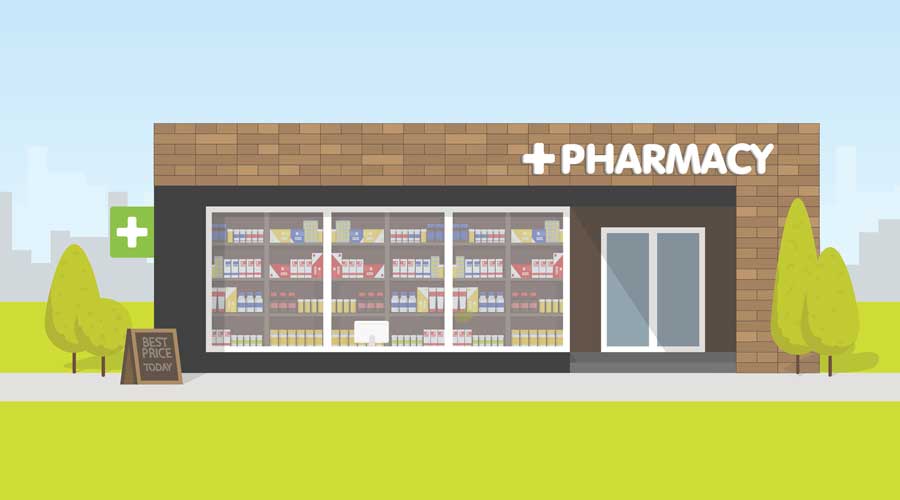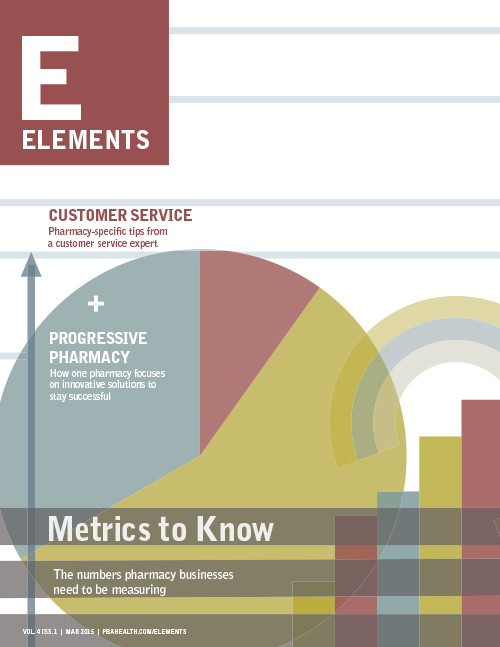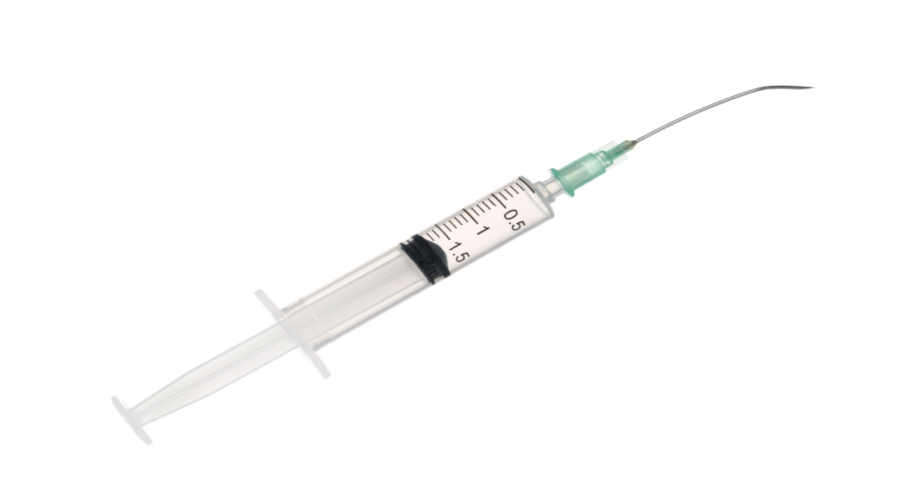Inside: Learn everything you need to know to start a pharmacy.
It’s one thing to have an idea to open a pharmacy, but it’s something else entirely to get the ball rolling. If you’ve never run a business before, starting an independent pharmacy may seem like an unachievable dream, but there are concrete steps to take to turn that dream into a reality.
Before you open your doors, you’ll have to make critical financial decisions and cut through layers of red tape. But even if the idea is intimidating, it’s not impossible.
Follow these steps to start your independent pharmacy.
Step 1: Write a business plan
Before you can start your pharmacy, you have to define it. Writing a business plan will help you refine what your pharmacy’s business is going to look like.
It will start with big-picture elements, like your vision statement and mission statement. A vision statement is a short, aspirational statement that defines why your business exists. A mission statement is longer and more specific. It lays out the ways you plan on accomplishing your goals.
After these broader elements, you’ll get down to brass tacks. In your objectives section, you’ll set specific parameters for your success. For pharmacies, these goals might be:
- Hitting a specific number of average prescriptions filled per day
- Achieving a certain gross profit margin or sales target
- Garnering a high rating on Google reviews
You’ll also want to perform some market research. The demographics of your community, economic factors like unemployment, income statistics, and more will determine if your pharmacy will be viable.
READ NEXT: Here’s a Proven Method to Set Pharmacy Business Goals That Get Results
At this point, you’ll also want to be thinking about your pharmacy’s name. A few things to think about before you decide:
- Spelling: A simple spelling makes it easier for patients to find your pharmacy online.
- Availability: Don’t choose a name that’s already in use. You should choose a name that has a “.com” domain name available.
- Memorability: Pick something that will stick in patients’ minds—you may have to ask for feedback from friends and family to determine what that might be.
Step 2: Secure funding
If you don’t have all your start-up funds sitting in your bank account, don’t worry: you can look outside your own pockets for funding.
Most independent pharmacies are eligible for loans backed by the U.S. Small Business Administration. These loans come from individual lenders (not the SBA itself), but the loan is partially backed by the administration to reduce the risk for the lenders.
Preparing an SBA loan application can be complicated, but the good news is that you already have your business plan done, which will be required for your application.
Additionally, you will have to write a statement of purpose that outlines how much money you’re seeking, the purpose of the loan, the terms of repayment, and any available collateral.
You’ll also have to get into the weeds with your pharmacy’s financials. For a brand new business, your SBA loan package will require:
- Cash flow statement with 6 months of projected statements
- Income statement with projected income for the next 12 months
- A balance sheet with a twelve-month projection
- Personal financial statement
The reason you have to include a personal financial statement is that SBA loans do require owners to have equity in their business. Even if you’re planning on relying on a loan, you’ll also have to invest some of your own money in the pharmacy.
In addition to a loan, now is the time to consider setting up two alternative forms of funding to help with cash flow:
- Line of credit: A line of credit is a revolving source of funds that is available to you at any time. Once you establish a line of credit, you can treat it as a part of your pharmacy’s working capital and use it to pay for short-term expenses, even when you don’t have enough cash on hand.
- Small business credit card: A small business credit card provides financial flexibility, high spending limits, and an easy credit score boost.
More articles on starting a pharmacy business
How to Write a Pharmacy Business Plan 
 How Much Does It Cost to Run a Pharmacy?
How Much Does It Cost to Run a Pharmacy?
 How to Select the Best Pharmacy Location
How to Select the Best Pharmacy Location
 Is Owning a Pharmacy Profitable?
Is Owning a Pharmacy Profitable?
Step 3: Decide on a structure
The business structure you choose can have a massive effect on your pharmacy. It determines several important things:
- How much you pay in taxes
- What paperwork you need to file
- Any personal liability you have
- How you can raise money
While there are quite a few business structures to choose from, independent pharmacies tend to fall into one of three categories: S corporation, C corporation, and limited liability corporation (LLCs).
S Corporation
According to the 2019 NCPA Digest, 59 percent of pharmacies organize as an S corporation. Filing as an S corporation offers owners protection of their personal assets, and these businesses don’t have to pay federal taxes at the corporate level.
C Corporation
Ten percent of pharmacies organize as a C corporation, which offers the same personal protection as an S corporation but runs the risk of being taxed twice—when the pharmacy makes a profit and again when dividends are paid to shareholders.
LLC
Another 26 percent of pharmacies file as LLCs. In most cases, owners are protected from personal liability, but they’re also considered self-employed and must pay self-employment taxes. They also are “limited” in the sense that if a member leaves the LLC, it might have to be dissolved and reformed with new membership.
Step 4: Find a location
Where your pharmacy is located can have an outsized effect on its future profits. If patients have to drive 15 minutes off their normal route to pick up their prescriptions, they might decide to settle for the chain pharmacy that’s closer to them, even if they don’t get the same great level of customer service.
Take your time finding the right spot instead of settling for the first space that seems like it could fit a pharmacy. Neighborhoods with these characteristics can set you up for success:
- Older demographics
- A high concentration of doctors offices and hospitals
- Plenty of other retail stores
- High traffic (both foot and vehicle)
Even if you nab a space in a neighborhood with all these characteristics, it may not be right. The storefront should have high visibility, to remind patients of you every time they pass by. It should also have a spacious parking lot (ideally with room for a drive-through) and an interior that can fit all your inventory with room for growth.
Step 5: Register your pharmacy
At its simplest, registering your pharmacy means registering your business name with state and local governments. When you do this, you prevent someone else from opening a business with the same name in your state.
If you’ve chosen to structure your pharmacy as an S corporation, you also have to file Form 2553 with the IRS to make it official.
Right after you register your business, you need to get a federal tax ID number, or Employer Identification Number (EIN). You’ll need this to open a bank account for your business, pay taxes, hire employees, and apply for business licenses. You also may need a state tax ID if your pharmacy is required to pay state-level taxes. The requirements for this vary from state to state.
In order to do business, you’ll also need to obtain a pharmacy retailer license. The requirements for this are determined by your state board of pharmacy. You’ll also be required to have:
Step 6: Open a business bank account
As the owner of an independent pharmacy, you need a business bank account to keep from mixing up your personal and business finances. At the very least, you’ll want to start with a business checking account, but you should also consider opening a savings account, credit card account, and a merchant services account for your pharmacy.
Business bank accounts can come with a lot of fees, so the SBA says you should consider these factors when opening your checking or savings account:
- Introductory offers
- Interest rates for savings and checking
- Interest rates for lines of credit
- Transaction fees
- Early termination fees
- Minimum account balance fees
A merchant services account allows you to accept credit and debit cards from patients, and they can come with a whole extra set of fees like transaction fees, monthly minimum fees, and more.
Step 7: Insure your pharmacy
While your business structure should protect your personal property from business liabilities, insurance is necessary to fill in the gaps. You’ll probably need a few kinds of insurance to keep your business running smoothly.
Professional liability insurance is a must for a high-risk business like a pharmacy. It protects you from the consequences of mistakes like dispensing the wrong drug or the wrong dose.
If you have employees, you’re legally required to protect them with workers’ compensation. That means if an employee is injured on the job, they can get all the care they need without draining your business bank account.
You’ll also need property insurance whether you rent or own your property. This will protect your inventory in case it’s destroyed in an accident.
Step 8: Find your team
The average independent pharmacy has around eight non-owner employees, according to the NCPA Digest. While you might not start out with that many, you probably won’t be going it alone. Before you open your pharmacy, you have to put a great team in place.
A detailed, accurate job description is crucial in attracting people who are up to the task. If any requirements, licenses, or certifications are required, make sure they are listed so only the most qualified candidates apply.
When you bring people in for an interview, standardize your process to avoid any unintentional bias in hiring.
After you’ve decided who to hire, do a little research on them. This doesn’t have to mean conducting a full background check (although you could), but certainly call previous employers to make sure they come highly recommended and check out any public social media profiles.
RELATED: 30 Job Interview Questions to Ask Pharmacy Applicants
Step 9: Secure suppliers
The bulk of your inventory costs will come from prescriptions, so it’s important that before you open your pharmacy, you’ve established a beneficial relationship with your primary and secondary suppliers.
A primary wholesaler should not only offer you competitive prices every single day, they should also offer you attractive discounts and rebates, good payment terms, and fast delivery.
Joining a buying group like ProfitGuard® can make sure you establish a wholesaler contract that works for your best interests, providing you the lowest net costs of goods possible. “It’s the industry game changer for the independent pharmacy owner or operator,” says Huy Duong, owner of Dale’s Pharmacy in Colorado. “There’s nothing out there like it on the market.”
In the case that your primary wholesaler doesn’t have what you need, you’ll need a reliable secondary supplier waiting in the wings. Since there are many fly-by-night suppliers offering deep discounts on potentially suspect drugs, you should make sure your secondary supplier is NABP-accredited and HDA-certified.
BuyLine®, an NABP-accredited secondary supplier, offers a full line of brands, generics, OTCs, and controls at the lowest prices in the secondary market. In addition to having low list prices, BuyLine also rewards purchases with cash rebates and significant discounts on brands. Earn up to an additional 10% cash rebate on generics and up to WAC -4% on brand.
Step 10: Start your marketing engines
As opening day approaches, you should start a marketing campaign to get your name out there. Work on creating a brand, including:
- A brand identity, like a logo
- Consistent messaging about what you’re offering patients
- Positioning your pharmacy brand to the right demographics
You should also set up your web presence. This isn’t only your website, but social media accounts for the pharmacy, too. You also need to set up your business on review sites like Google, Yelp, Foursquare, and others to help new patients find your pharmacy.
RELATED: How to Get Five Stars From Review Websites
The pre-opening marketing campaign you undertake will depend on your community’s demographics. If you have an older clientele, traditional marketing channels like direct mail, newspaper advertising, and radio campaigns will serve you well.
RELATED: 6 Traditional Marketing Ideas to Get New Pharmacy Patients
If you’re targeting younger patients, you’ll need to make your marketing efforts digital. Social media advertising and email promotions are more likely to catch their attention. Preparing a mobile app tells young patients that you are convenient and easy to work with.
Use our complete guide to marketing to put together a foolproof marketing strategy for the launch of your pharmacy.
Final step: Open your doors!
After months of legwork, you’re finally ready to open your pharmacy! Do something to celebrate.
You could throw a grand opening party and invite community members into your pharmacy to see what sort of products you have on the shelves and what services you offer at the pharmacy.
Print out promotional materials about any special offerings you have, like pet medicine or immunizations. You can also hand out coupons or offer other discounts to entice people back into your store after your opening event.
Even though you’ve poured all your effort into getting the pharmacy to its opening day, the real work is just beginning. Don’t lose focus on the real job of making your community a healthier place.
 These Are the Most Important Pharmacy Metrics to Measure
These Are the Most Important Pharmacy Metrics to Measure
This white paper includes 30+ formulas to calculate the most important metrics for independent pharmacies. You’ll learn to think like a retailer, discover the methods to track and measure meaningful pharmacy metrics, and learn ways to use pharmacy metrics to get insight into business performance.
A Member-Owned Company Serving Independent Pharmacies
PBA Health is dedicated to helping independent pharmacies reach their full potential on the buy-side of their business. Founded and run by pharmacists, PBA Health serves independent pharmacies with group purchasing services, wholesaler contract negotiations, proprietary purchasing tools, and more.
An HDA member, PBA Health operates its own NABP-accredited warehouse with more than 6,000 SKUs, including brands, generics, narcotics CII-CV, cold-storage products, and over-the-counter (OTC) products — offering the lowest prices in the secondary market.



 How Much Does It Cost to Run a Pharmacy?
How Much Does It Cost to Run a Pharmacy? How to Select the Best Pharmacy Location
How to Select the Best Pharmacy Location Is Owning a Pharmacy Profitable?
Is Owning a Pharmacy Profitable? These Are the Most Important Pharmacy Metrics to Measure
These Are the Most Important Pharmacy Metrics to Measure









